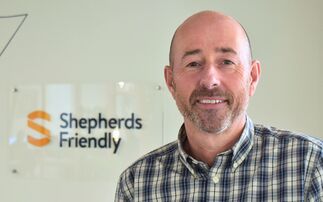First Complete's Toni Smith explains why her New Year's wish is to narrow the protection gap and how the industry can look at ways of achieving this.
As we start 2016 I look ahead and would love to be able to predict that this is the year when the protection gap is finally diminished.
We all know that the need is greater than ever but somehow I feel my wish is a bit of a pipe dream.
There are plenty of educational pieces in the trade publications about the need for protection, but there is still a woeful lack of talk in the consumer facing press, leaving us with an ongoing battle of educating consumers at large.
It is encouraging that upwards of 70% of mortgage business is now arranged through brokers as it is hoped that these consumers stand a much higher chance of receiving the crucial protection advice that they need.
However, this still leaves a huge gap amongst the people who do not visit a mortgage or financial adviser.
So often it is those with the least money that may have the least exposure to an adviser, who will be the most adversely affected.
So if I could wish one thing for 2016 it would be for all people to receive a higher level of education on the need for protection so that they could at least make an informed choice.
We need to help stop the ostrich mentality that ‘it won't happen to me'.
This mentality is stark in the figures: 73% of parents questioned by L&G, in their 2013 ‘Value of a Parent' report, said that their top priority was ensuring their children are looked after financially if they were unable to provide due to illness or death.
Yet, from their 2015 report, less than a third of parents were found to have any critical illness cover (28%), only 19% had income protection and only just over half (53%) have any lump sum Life Assurance in place to take care of their family if something should happen to them.
It is often only when something happens to a friend or member of the family that people start thinking about their own frailties. The same often occurs when a celebrity dies, there is plane crash or some other dreadful event.
What is highlighted even less than the incidence of deaths or critical illnesses is the effect on the rest of the family of having someone that is seriously ill.
This can often result in the other partner or a parent having to stop work altogether in order to look after the person who is ill putting family finances into a tailspin and homes at risk
For those of us aware of it, there are so many incidents of people who have hit really hard times after falling ill.
The Children in Need event showed illness as a key reason for child poverty; either due to parents who were unwell and couldn't work, which left the family in poverty and forced the child into the role of carer, or parents unable to work while looking after children that are ill.
Using events such as Children in Need, health awareness weeks and statistics available from reports such as the L&G one, can therefore be a way to really bring it home to clients that the unexpected definitely can happen.
We just need this to have a higher profile in the national broadcast media so that more people are exposed to the fact that far too often the unexpected does happen.
Toni Smith is sales operations director at First Complete











